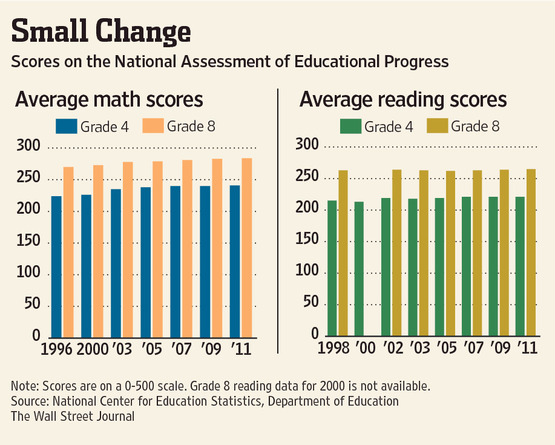When it comes to education, one size doesn’t fit all. Yet that is exactly the kind of system we would get if the U.S. required all students to meet a single set of national academic standards.
Proposing that all children meet the same standards is essentially proposing a nationalized system of education. Some reformers may argue otherwise, but the truth is that standards drive testing, which in turn drives what material is covered, as well as how and when it is taught.
Such uniformity would only make sense if: 1) there was a single best way for all students to learn; 2) we knew what it was; 3) we could be sure the people running this nationalized education system would adopt that correct approach; and 4) they would remain in charge far into the future. But that isn’t how things are. There is no consensus on what all students need to know. Different students can best be taught and assessed in different ways.
Who Has the Power?
Even if we could identify a single, best way to educate all children, who is to say the people controlling the nationalized education system would pursue those correct approaches? Reformers would do well to remember that they are politically weaker than teacher unions and other entrenched interests. Minority religions shouldn’t favor building national churches because inevitably it won’t be their gospel being preached.
A number of prominent reformers nevertheless seem determined to lay the foundations for this nationalized education church. What might be inspiring them to do so?
Some are convinced that national standards will be more rigorous than what most states and districts have today. Yet independent evaluations of a proposed set of national standards, known as Common Core, show that they are rather mediocre and significantly worse than those in several states.
Supporters say states, districts and individual schools would be free to surpass the national standards, just not fall below them. But testing would constrain what was taught and when. Say California wanted to maintain its more rigorous standard of covering algebra in eighth grade, rather than teaching it in ninth grade as required in Common Core. If national assessments aligned with Common Core call for children to be tested on their knowledge of algebra in ninth grade, California students who had already moved on to geometry would fare poorly being tested on material they hadn’t covered for a year. States would be penalized with lower scores on the national test if they taught subjects at a different time and in a different manner than what Common Core requires.

It is also a mistake to believe that progress can only occur with a mandate from above. This ignores how advances historically were made in education. Consider this: A little more than a century ago, many communities didn’t offer high-school education. Eighth-grade skills were considered sufficient. But over time, as local communities sought to attract residents and capital, they began offering higher-level schooling. Virtually every community in the U.S. ended up building high schools and over the years steadily raised the bar for graduation without any central authority ordering it.
Interestingly, this system of choice and competition resulted in a fair amount of uniformity across U.S. school systems. But because schools don’t have to be completely uniform they can still experiment with different approaches and customize their efforts for the specific students they serve. It is that possibility of experimenting with different standards, assessments and curricula that allows us to learn about what does and doesn’t work and make progress.
Where Is the Link?
Unfortunately, that progress largely stalled; student achievement has been flat for four decades. But this lack of progress wasn’t caused by a lack of national standards. Instead, unionization of educators and the resulting imposition of uniformity and restraints on competition are largely to blame. Imposing even more uniformity with national standards will only compound that problem.
Countries with national standards generally don’t have higher achievement. Canada and Australia are large, diverse countries like the U.S., with significantly stronger student performance as measured on international tests. Yet neither has national standards, tests or curricula. It is true that some high-achieving countries do have national standards—examples include Singapore and Finland—but these countries contain small homogeneous populations that might be more comparable to one of our states or large districts than to the U.S. as a whole. And many lower-achieving countries, such as Greece and Thailand, have national standards and curricula.
The way to improve our students’ performance is to reinvigorate choice and competition, not stifle it. We should be as wary of central planning for our education system as we would for our economy.
— Jay P. Greene
This essay was originally published by the Wall Street Journal as part of a debate on the value of national standards with Chester E. Finn.


